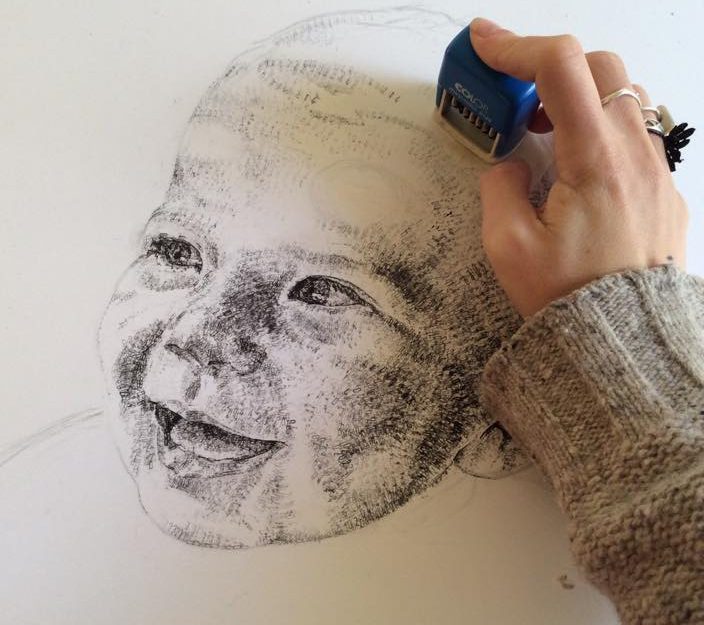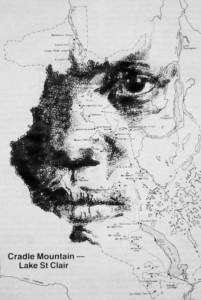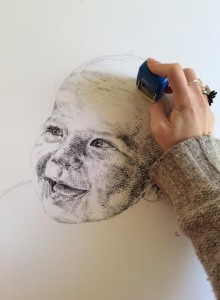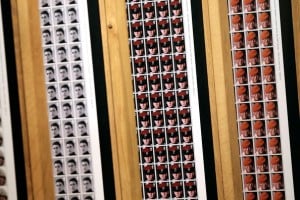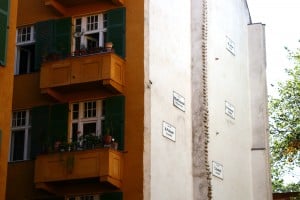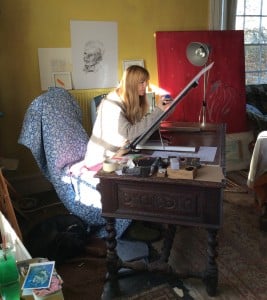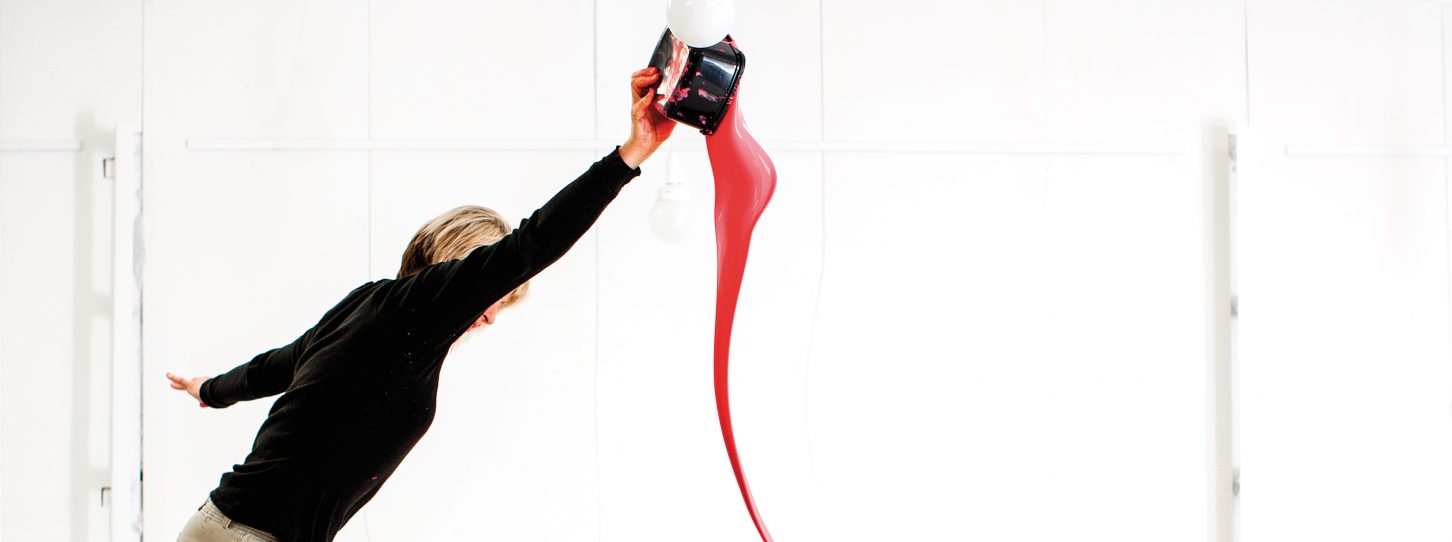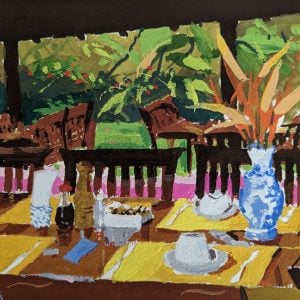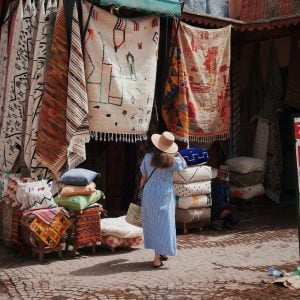Daisy Courtauld- Artist Interview
Daisy Courtauld is a bluethumb artist based in Perth, from the United Kingdom. She specialises in portrait art, in which she creates using date stamps, to make images made of numbers, and as a whole act as an ‘identikit’ mapping the unique sequence of facial contours. Daisy believe’s in making art about things that matter. She is driven by humanitarian issues, and is currently focused on the history of Australia’s indigenous people. This week Daisy answer’s our questions.
What makes you want to create art/what inspires you?
Injustices, stories of loss and struggle, which must be heard, and issues which need confronting. Every time I watch the news I want to make art! Having said that I will always have a sketchbook in my bag, wherever I go, just in case I find myself sitting or waiting. I will sketch anything that’s in front of me.
Do you like to take on commission work, or mainly paint what you like/feel at the time?
Yes, I do like to take on commission work. I have done so for the past 8 years. When I’m working on a commissioned portrait, getting a likeness is incredibly important, whether it’s in a certain expression or capturing their character through their physical appearance. To be able to do that is a very particular skill, and I think it has challenged me and ultimately made me a more observant artist, and hopefully a better one. I also love ideas to converge. If a client comes to me with a particular vision of what they’d like, that conversation and process can be very exciting.
What are 3 pieces of art from any artists that have an influence on you and your work?
Steve McQueen’s ‘Queen and Country’ – this work has so many levels, I find something new in it every time I see and think about it. What particularly inspires me is McQueen’s intention of placing this work/idea/message into the public arena, in the form of a set of postage stamps. This kind of message should be heard, whether art interests you or not.
Christian Boltanski’s ‘Missing House’ is a site specific installation in Berlin. It is a memorial to an apartment block, which was bombed, at the end of World War II, and its residents, who tragically died. This work first introduced me to making work about human stories and loss of identity without necessarily being political.
Chen Shaofeng’s series ‘The Voiceless People’ – This work had a huge impact on me, and I remember seeing it for the first time at an exhibition in the UK. I think my interest in art grew into a full-blown passion that day. It’s about identity and human stories, which captivated me, but more importantly it first sparked my love of portraiture. It showed me the capabilities of a portrait and ultimately inspired me to express my own ideas through portraiture.
What attracts you to portrait work?
A face can tell a person’s story – deep lines, colour, contours, scars, a glint in an eye. I discover these stories while I work, which is really exciting to me. Every face is different, and it always surprises me how the tiniest most insignificant alteration or addition to a portrait can change the entire appearance or story. I also think portraiture pairs well with my method of using numbers to build an image – the shapes and tone, which appear, seem to tell the story well. I think the face will always fascinate me. I can’t imagine a point in my future as an artist, when I will move on from portrait work.
Do you collect art, if so whats your favourite piece? can you show us?
Not yet…I keep a wish list of artists whose work I would love to buy and collect, but unfortunately at the moment, I can’t afford that luxury! Currently I have my eye on the work of Pete Ross, Ed Fairburn and Susie Hamilton.
Who is your favourite Australian Artist and why?
Brook Andrew, a Melbourne based artist. He makes work which is very confronting and in my opinion, carries a vital message that everyone must hear. His work is about identity and memory and I am particularly drawn to his ideas about the history of Indigenous peoples, in terms of race relations and how they have been perceived and represented to the West by power structures throughout history. It is a fascinating perspective and Andrew approaches it in an intelligent and challenging, yet often, sensitive way.
Keep up to date with Daisy’s work at: http://daisycourtauld.co.uk

